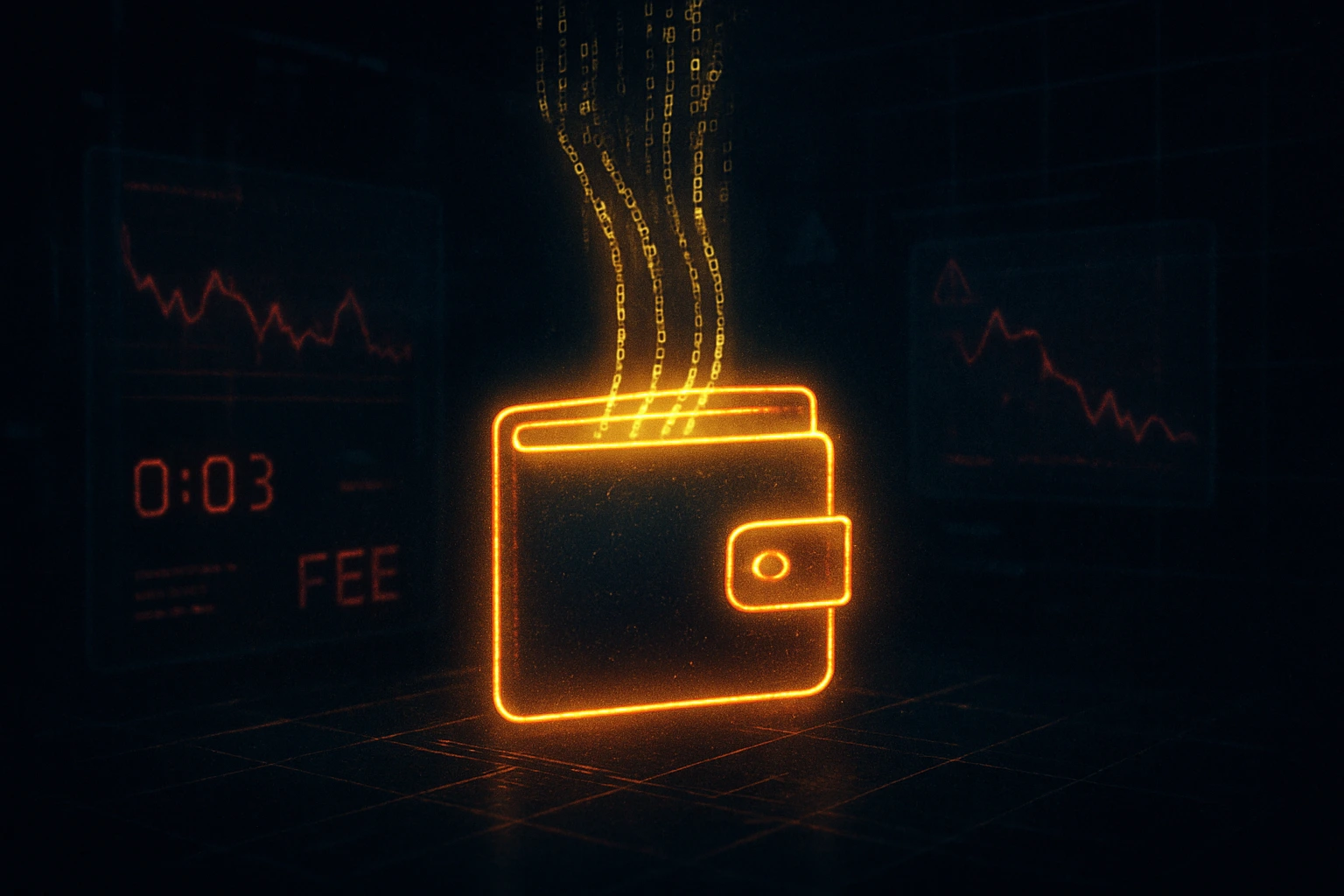Because Nothing Says “Financial Freedom” Like Betting on Blockchain
So you want to buy Ethereum, huh? That’s cute.
Maybe it’s because your barber mentioned “staking” between shaves. Maybe your yoga instructor said she made passive income “on-chain.” Or maybe, just maybe, you finally decided that trusting banks in 2025 is like trusting a raccoon to babysit your wallet.
So welcome, aspiring crypto wranglers, to the dazzling, dizzying world of Ethereum, where Vitalik Buterin’s brainchild powers DeFi dreams, NFT hype, and price swings wilder than an OnlyFans influencer’s Friday evening.
This guide breaks down the process into bite-sized, beginner-friendly steps, sprinkled with enough wit to keep you sane. We’ll cover picking a platform, funding your account, snagging ETH, storing it safely, and dodging regulatory clowns while explaining crypto jargon like KYC and wallets in ways that won’t make your head spin.
I’m here to help you buy ETH without getting scammed, confused, or arrested (ideally). So let’s do this the right way. And yes, I’ll hold your hand, unless you’re one of those people still storing passwords in your Notes app.
What Is Ethereum?
Spoiler: It’s not just Bitcoin’s nerdy cousin.
Ethereum’s the second-biggest crypto by market cap, trailing only Bitcoin like a scrappy underdog with a chip on its shoulder. Think of Ethereum as a digital MacGyver. And ETH isn’t just money. It’s the fuel for a decentralized network that runs smart contracts (self-executing code), decentralized apps (dApps), and non-fungible tokens (NFTs).

Launched in 2015 by Vitalik “Crypto Jesus” Buterin, Ethereum’s blockchain is a global ledger that logs every deal, verified by nerds’ computers, not shady banks. Unlike Bitcoin, which is mainly a digital dollar, Ethereum’s a playground for innovation.
Say, DeFi lending, NFT marketplaces like OpenSea, or even blockchain-based voting systems. Ethereum is unpredicatable. Its price yo-yos harder than a reality star’s career.
2023 upgrades sent it soaring, but SEC tweets can tank it faster than a congressional ethics probe. But wanna join the chaos in spite of all these? Here’s how to buy ETH without selling your soul.
Step 1: Choose Your Crypto Playground
Picking an exchange is like picking a dive bar. Go for one that’s legit, not one where you’ll wake up with an empty wallet.
To score Ethereum, you need a platform, your crypto speakeasy where deals go down. Centralized exchanges (CEXs) like Coinbase, Binance, or Kraken are beginner-friendly, regulated, and as close to “Crypto for Dummies” as it gets (for a fat fee, naturally).

They handle your funds, verify your ID, and offer slick apps. Decentralized exchanges (DEXs) like Uniswap let you trade directly from a wallet (like MetaMask), but they’re messier than a Senate budget debate and not ideal for newbies.
The full breakdown on how to use them is in step 3. But let’s talk about how to pick one first.
How to Pick a CEX:
- Regulations: Pick one that kisses your country’s regulatory ring (e.g., IRS for Yanks, FCA for Brits). Shady offshore platforms are like tax havens. Fun until the feds raid your yacht.
- Fees: Hunt for low fees and spreads (the price gap between buying and selling). Coinbase is as easy as a Sunday hangover, but its fees bite harder than a lobbyist’s lawyer. Binance offers lower fees but a steeper learning curve.
- Security: Go for 2FA, cold storage (crypto locked offline), and no “whoops, we lost your coins” scandals. Kraken’s been solid since 2011; others have had “oops” moments.
- Ease of Use: Coinbase’s app is as intuitive as your favorite food delivery service. Others, like KuCoin, might feel like assembling blockchain IKEA furniture. Blindfolded. Yeah.
Action Step:
- Sign up for Coinbase or Kraken.
- Cough up an email, password, and your driver’s license for KYC (Know Your Customer). Because Big Brother’s got a fetish for forms.
- Slap on 2FA unless you want hackers sipping piña coladas with your ETH.
- Check the exchange works in your state. eToro’s crypto game skips New York and Nevada like a bad Tinder date.
Step 2: Load Up Your Wallet (Not the Leather One)
Time to channel your inner Gordon Gekko, minus the suspenders.
Account verified? Now it’s time to funnel some green into this crypto crapshoot. CEXs take bank transfers, debit/credit cards, or PayPal (if your country’s cool with it). Here’s the tea.

- Bank Transfers: Cheap but slow, like waiting for a government refund. Expect 1-3 days for funds to clear.
- Cards: Fast but pricier than a Capitol Hill fundraiser. Fees can hit 3-5%, like a bad tip at a fancy restaurant. Ouch.
- PayPal: Slick in the US, but the EU and UK get the regulatory cold shoulder (UK’s FCA banned PayPal crypto buys in 2023, resumed in ‘24 with a side of red tape).
Watch for minimum deposits—some platforms demand more upfront cash than a trendy club’s cover charge. Also, verify your payment method early to avoid delays when Ethereum’s price is mooning.
Action Step: On Coinbase, go to “Profile/Settings,” select “Add Payment Method,” and hook up a bank account or card. Toss in $50 to dip your toes (or go full Wall Street bro if you’re feeling it). Peek at the fees before you commit. Don’t let the exchange pickpocket you.
Step 3: Buy ETH Like a Blockchain Boss
Hitting “Buy” feels better than snagging a Black Friday deal.
Funds loaded? Strut to the “Buy” or “Market” tab, pick Ethereum (ETH), and decide how much to grab. Dollars (e.g., $50) or ETH (e.g., 0.02 ETH). Double-check the fees. Exchanges sneak in spreads. Hit “Buy,” confirm, and voilà. Your ETH lands in your exchange wallet.
Gonna sell later? Flip to “Sell,” pick a payout (bank transfer’s safest), and cash out. ETH’s price swings really hard, so stalk news like network upgrades (sharding’s the next big thing) or SEC tantrums on CoinGecko.
If you’re still confused, let me just write all the options down below like you’re dumb.
Option A: Centralized Exchanges (CEXs)
Think of CEXs as crypto’s version of your neighborhood bank, with more coins and fewer lollipops. You sign up, verify your identity, and buy Ethereum using fiat money (USD, EUR, INR, etc).
Pros: Easy onboarding, decent customer support, lots of payment options.
Cons: KYC (Know Your Customer) requirements, higher fees, limited privacy.
How to buy ETH on a CEX:
- Create an account: Email, password, and probably a selfie with your ID.
- Complete KYC: Upload your ID, maybe proof of address. Be prepared for awkward lighting.
- Secure the account: Enable two-factor authentication (2FA). Authenticator app > SMS.
- Add payment method: Bank transfers (slow but cheap), debit/credit cards (fast but pricey), PayPal (if supported in your region).
- Buy ETH: Input the amount, double-check the fees, and confirm.
Fees alert: Like I said before, watch out for hidden fees, like spreads, gas fees, withdrawal costs. Coinbase, for example, is notorious for its markup.
Option B: Decentralized Exchanges (DEXs)
DEXs are the wild west. No registration, no ID, just wallets and contracts. You stay anonymous, but you better know what you’re doing.
How to use a DEX:
- Get a wallet: MetaMask is a browser extension. Rabby is a growing alternative. Back up your seed phrase!
- Fund it: Buy USDC or stablecoins on a CEX, send them to your wallet.
- Connect to DEX: Visit Uniswap.org (check the URL!) and connect your wallet.
- Swap for ETH: Choose the token pair, set slippage tolerance, and confirm. Pay attention to gas fees.
Real talk: One missed decimal or typo can send funds into oblivion. DEXs are powerful, but brutal to the careless.
Option C: Fintech & Stock Broker Apps
This is the diet soda of crypto investing. You can buy ETH, but you don’t really own it.
Apps like:
- Cash App: U.S.-centric, decent for beginners.
- Revolut: Slick UI, access to ETH, but often no withdrawals.
- Robinhood: More meme than machine.
- PayPal/Venmo: Simple to use, but limited control.
Great for dipping your toes in, but if you want to use your Ethereum in DeFi or transfer it out? Good luck.
Option D: Peer-to-Peer (P2P)
The Craigslist of crypto. Buy Ethereum directly from strangers online.
Platforms:
- Binance P2P: Has escrow protection.
- LocalCryptos: Bitcoin’s P2P cousin who also sells ETH.
Tips to survive:
- Always use platforms with escrow.
- Don’t deal outside the platform.
- Don’t send money first without confirmation.
- And if someone says “Let’s talk on WhatsApp” — block.
Option E: Crypto ATMs
Yes, these exist. Insert cash, get ETH. Often found in malls or gas stations.
Pros: Easy, quick, decent anonymity. Cons: Horrible rates, high fees, sometimes sketchy hardware.
Use only if you’re in a hurry and allergic to bank accounts.
Step 4: Store Your ETH Safer Than a Politician’s Secrets
Leaving ETH on an exchange is like storing cash in a frat house mattress.
Exchanges are convenient but risky. Hacks, bankruptcies, or freezes can wipe you out. Move your ETH to a wallet for safekeeping. Here’s the lowdown.

- Hot Wallets: Apps or browser extensions (e.g., MetaMask, Coinbase Wallet) connected to the internet. Great for small amounts or frequent trades, but vulnerable like a politician’s email server. Save your recovery phrase (a 12-24 word code) offline—it’s your lifeline if your phone takes a dive.
- Cold Wallets: Hardware devices like Ledger Nano S or Trezor, offline and hack-proof. They cost $50-$150 but are worth it for big stacks. Store them in a safe, not your car’s glovebox.
- Paper Wallets: Printed public/private keys for long-term storage. Old-school and risky—don’t let your cat shred them.
Action Step: Download MetaMask for small trades (save the recovery phrase in a secure spot). For serious holdings, buy a Ledger Nano S. Transfer Ethereum from your exchange to your wallet: copy your wallet’s public address, paste it into the exchange’s “Withdraw” tab, and send. Triple-check the address—crypto transfers are final, like a bad tweet.
Step 5: Navigate the Regulatory Rollercoaster
Crypto laws are messier than a reality show reunion.
Crypto rules vary as wildly as a tabloid headline. The EU’s Markets in Crypto-Assets (MiCA) framework, fully live in 2024, is the world’s first comprehensive crypto rulebook. In the US, the IRS tracks every ETH trade, and the SEC’s cracking down like a grumpy librarian.

The UK’s FCA demands AML compliance, and Canada taxes ETH as property (50% capital gains or 100% business income). Ignore these, and you’re begging for fines or frozen funds.
Check your country’s stance on staking rewards (often taxed as income) or DeFi (under extra scrutiny). Stick to regulated platforms like Coinbase to stay legit. Blockchain analytics are getting scarier—DEXs like Uniswap aren’t as anonymous as they seem.
Action Step: Research your local crypto laws (e.g., IRS.gov for US, FCA.org.uk for UK). Use a compliant exchange and log trades for taxes. Consult a crypto-savvy accountant if you’re swimming in ETH profits.
What to Do With Your ETH (Besides Watching the Price Obsessively)
ETH isn’t just a speculative asset. Here’s what it can actually do.
1. Staking ETH
Ethereum switched to Proof of Stake (PoS), meaning you can earn interest on ETH by staking it.
- Solo Staking: Requires 32 ETH, a dedicated validator node, 24/7 uptime.
- Pooled Staking: Use providers like Lido, Rocket Pool, or centralized exchanges (Coinbase, Binance) to stake any amount.
Yield: Typically 3–6%. But it fluctuates.
Risks:
- Centralized providers may be censored or penalized.
- Validators can be “slashed” (lose funds) if they behave badly.
If you want passive income and don’t mind some technical setup, staking is your jam.
2. Explore DeFi (Carefully)
The world of decentralized finance runs largely on Ethereum.
With ETH, you can:
- Lend it on Aave for interest.
- Borrow stablecoins using ETH as collateral.
- Provide liquidity on platforms like Curve or Balancer.
Rewards can be juicy, but so are the risks. Smart contract bugs, token price crashes, or rug pulls can vaporize your stack.
DYOR = Do Your Own Research. Or just stake and chill.
3. NFTs and Digital Collectibles
Yes, NFTs are still a thing. Maybe not as hyped, but still alive.
Use Ethereum to:
- Buy NFTs on OpenSea, Blur, or Foundation
- Mint your own NFT art (if you think you’re Banksy)
- Trade collectibles and game items
Just be aware: most NFTs are illiquid, expensive to move, and, uh, kinda ugly. Don’t go broke collecting memes.
4. Pay for Stuff
Some merchants accept Ethereum for:
- Web hosting
- VPN subscriptions
- Conference tickets
- Custom socks (seriously)
But because of gas fees and volatility, most people prefer using stablecoins or offloading ETH for fiat first.
Is Ethereum Worth It?
It’s riskier than a blind date with a regulator.
Ethereum’s a crypto titan—second to Bitcoin in market cap, powering DeFi, NFTs, and smart contracts. Like I said in the beginning, its 2023 upgrades and ETF buzz sent prices soaring, but it’s volatile.

A network upgrade can pump ETH; a regulatory tweet can tank it. Unlike stocks, crypto’s value hinges on speculation (the “greater fool” theory), not assets or cash flow. Only invest what you can lose.
That said, ETH’s entrenched as crypto’s backbone. Its shift to proof-of-stake (less energy, more scalability) and DeFi dominance make it a solid bet for risk-tolerant investors. Diversify—don’t go all-in like a rookie senator betting on a meme stock.
Here’s a small tip: Start small (e.g., $50) and diversify with stocks or BTC. Use AI tools like CoinGecko to track ETH’s price, but trust your gut for trades.
Wrapping Up: Your Ticket to the Crypto Circus
Buying Ethereum is your backstage pass to the blockchain bonanza. Pick a legit exchange, fund it, buy ETH, store it safely, and dodge the regulatory clowns.
With a dash of caution and a sprinkle of snark, you’ll be riding the crypto wave like a pro. So, ready to join the Ethereum elite? Just remember: in crypto, the only sure thing is gas fees and a good laugh.
Disclaimer: This post is pure satire, folks. No blockchain oracles were harmed in its creation. Crypto’s wild, so trade with cash you can afford to lose. If ETH tanks or your wallet gets hacked, don’t cry to me. I’m just the jester in this ghost crypto circus. No insiders were bribed in the making of this guide (yet).
